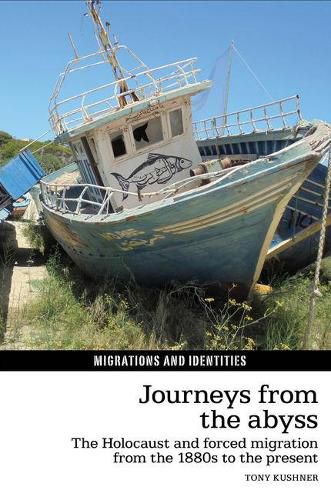Readings Newsletter
Become a Readings Member to make your shopping experience even easier.
Sign in or sign up for free!
You’re not far away from qualifying for FREE standard shipping within Australia
You’ve qualified for FREE standard shipping within Australia
The cart is loading…






This book explores Jewish refugee movements before, during and after the Holocaust and to place them in a longer history of forced migration from the 1880s to the present. It does not deny that there were particular issues facing the Jews escaping from Nazism, but in this enlightening study the author emphasises that there are longer term trends which shed light on responses to and the experiences of these refugees and other forced migrants.
Focusing on women, children, and ‘illegal’ boat migrants, the author considers not only British spheres of influence, but also Europe, the Middle East, the Americas, South Asia, Australasia. The approach adopted is historical but incorporates insights from many different disciplines including geography, anthropology, cultural and literary studies and politics. State as well as popular responses are integrated and the voices of the refugees themselves are highlighted throughout. Films, novels, museums and memorials are used alongside more traditional sources, allowing exploration of history and memory. And whilst the importance of comparison underpins this book, it also provides a detailed history of many neglected refugee movements or aspects within them such as gender and childhood.
Written in a lively and committed style, the book is accessible to both a general as well as a specialist audience, and will be of interest to those interested in the Holocaust, migration and generally in the growing crisis of ordinary people forced to move.
$9.00 standard shipping within Australia
FREE standard shipping within Australia for orders over $100.00
Express & International shipping calculated at checkout
This book explores Jewish refugee movements before, during and after the Holocaust and to place them in a longer history of forced migration from the 1880s to the present. It does not deny that there were particular issues facing the Jews escaping from Nazism, but in this enlightening study the author emphasises that there are longer term trends which shed light on responses to and the experiences of these refugees and other forced migrants.
Focusing on women, children, and ‘illegal’ boat migrants, the author considers not only British spheres of influence, but also Europe, the Middle East, the Americas, South Asia, Australasia. The approach adopted is historical but incorporates insights from many different disciplines including geography, anthropology, cultural and literary studies and politics. State as well as popular responses are integrated and the voices of the refugees themselves are highlighted throughout. Films, novels, museums and memorials are used alongside more traditional sources, allowing exploration of history and memory. And whilst the importance of comparison underpins this book, it also provides a detailed history of many neglected refugee movements or aspects within them such as gender and childhood.
Written in a lively and committed style, the book is accessible to both a general as well as a specialist audience, and will be of interest to those interested in the Holocaust, migration and generally in the growing crisis of ordinary people forced to move.